To make chlorine-heavy tap water safe, we use a water conditioner. The aquarium water conditioner is a liquid chemical that is added to tank water to get rid of harmful chlorine, chloramine, and other harmful components present in the tap water.
Now you might be thinking about how quickly they work? How long do you have to wait to put fish in the tank after conditioner?
As a general rule, you can put fish into the tank 15 minutes after adding the water conditioner. If the tank has proper flow, 2-5 minutes can be enough; however, for larger tanks with improper circulation, you may have to wait for about 30 minutes.
Read on to clarify all your doubts and concepts regarding this topic!
How Long to Wait to Put Fish in Tank After Conditioner?
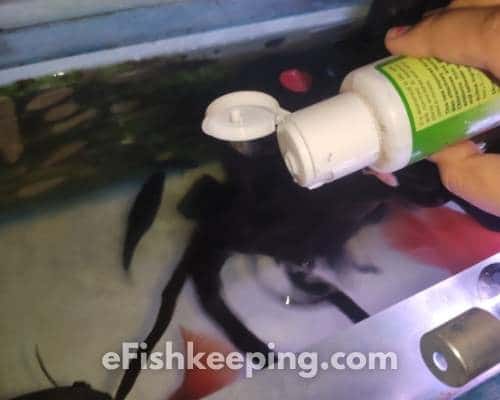
Whenever we do a water change in our home tanks, we generally use tap water. Now as good as the tap water can be for us, they are not good for the aquarium fish.
Chemical compounds like Chlorine are added to tap water to kill harmful bacteria and make the water disinfected. However, chlorine is considered to be toxic for fish at higher concentrations. And even its lower concentrations can put your fish in stress by damaging their gills.
Hence, there comes the need for water conditioners. Their primary job is to neutralize chemicals like Chlorine in tap water and thus make it safer for your aquarium fish.
Usually, water conditioners are harmless to fish when dosed correctly.
You don’t have to wait any time to add fish after adding water conditioner, especially if you are changing only a small portion of water. However, if you are changing the water entirely, then you should add water conditioner to the water before adding the fish to the tank for their safety.
See, as I already highlighted, chemicals like chlorine can be toxic and stressful for your aquarium fish. So it is essential to ensure that the tank is completely neutralized when you add your fish.
Usually, water conditioners are very fast-acting and are capable of neutralizing compounds like chlorine and chloramine within a few minutes. So for small water changes, you don’t need to worry much.
But for a complete water change, you can shift the fish into a safe place, treat the water with a water conditioner, let the process occur for a few minutes, and only then add the fish back to the tank.
Generally speaking, the water conditioners and dechlorinators can neutralize Chlorine as soon as they come in contact with chlorine molecules.
So for tanks that have proper water flow and active water pump to spread up the water conditioner adequately across the entire tank, about 2-5 minutes are enough as a waiting time before adding fish.
However, this process may take some time if the water is stationary and not circulating properly. So for tanks that are larger in size and don’t have enough circulation, you may have to wait for about 30 minutes before putting the fish in the tank.
By the way, do you use Seachem Prime? Then I highly recommend you to check out my detailed post: Seachem Prime 101: Dosage Guide, Calculator, And Chart
How Do Water Conditioners Work?
The water conditions neutralize the chlorine present in the tap water by the formation of ionic bonds that ultimately makes the chlorine harmless.
In simple words, the water conditioners act as a magnet, drawing the chlorine molecules away from the gills of the fish in your aquarium. Thus, keeping the aquarium environment safe for the fish to live.
But it is also crucial to note that if the water you add also contains chloramine apart from chlorine, you will have to add a more specialized conditioner that can deal with both.
To use water conditioners successfully, you need to determine what you’re trying to neutralize from the water, because not all water conditioners work the same.
The different types of water conditioners are:
- Dechlorinators- These water conditioners only neutralize chlorine, and therefore won’t help with anything else like chloramine.
- Chloramine Neutralizer- This water conditioner used to deal with chlorine, ammonia, and occasionally heavy metals.
- Complete Water Conditioners- The water conditioner neutralizes chlorine, ammonia, heavy metals, and copper. They can also work as PH buffers.
How Long Does Water Conditioner Take To Remove Chlorine?
As a rule of thumb, most dechlorinators are capable of neutralizing the chlorine in the water in a minute or two.
You may hear some aquarium hobbyists insist on letting tap water sit for 24 hours before adding it to the tank because of chlorine. While it’s true that some chlorine will evaporate from water in 24 hours, the chlorine actually stays in the water for 4-5 days.
On the other hand, when you use a water conditioner, there is no reason to wait those long hours or days for chlorine-free water. Water conditioners will neutralize the chlorine in the water immediately so it can be added in minutes, not days.
If you don’t have a water conditioner on hand, letting the chlorine evaporate from your water is a good practice. Otherwise, just condition the water and forget about the long wait!
Can I Put Water Conditioner In With My Fish In the Tank?
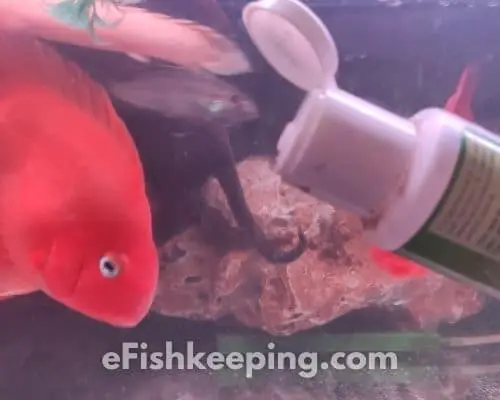
Pulling your fish out of your tank every time you need to add a chemical like a water conditioner can cause the fish a lot of stress. Because of this, being able to add chemicals to the tank without removing the fish is a desirable attribute in water conditioners.
You can put water conditioner in with your fish as long as you follow the directions on the water conditioner so you don’t accidentally overdose the tank. Thankfully, most water conditioners are rather forgiving when it comes to dosing, and it takes a rather severe overdose to cause any problems in your tank.
One of the key purposes of a water conditioner is to neutralize chloramine and ammonia in tap water which you will add to your tank. So in general, whenever you carry out a partial water change, adding fresh tap water to your aquarium, you will have to add a water conditioner to the water.
Can Too Much Water Conditioner Hurt Fish?
A large amount of water conditioner can hurt fish, but it takes a huge overdose for this to occur. It’s more dangerous to skip the water conditioner if you believe there are dangerous substances in the water.
The best way to ensure that you aren’t overdosing your fish tank with too much water conditioner is to follow the manufacturer’s guidelines.
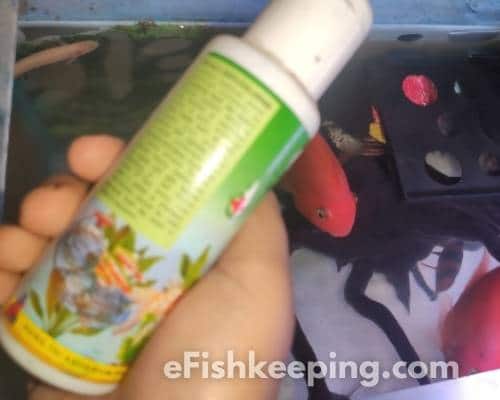
These guidelines are usually on the label of the bottle and that will tell you how much water conditioner to use per gallon or liters of water.
If you believe that you’ve added too much water conditioner to your tank, the quickest and most effective way to fix the problem is to do a water change.
It’s also a good idea to add the water conditioner to the new water before the water is added to the tank, so if you pour in too much conditioner, you can just discard the water in the bucket instead of having to change the water in your entire tank.
Recommended Read: Should Fish Tank Light Be On All The Time? (Solved!)
Final Thoughts
To sum up whatever we learned so far:
- You can add your fish into the tank almost immediately after adding the water conditioner.
- Water conditioners make tap water safe for fish by neutralizing substances like chlorine, chloramine, and others.
- You can add the water conditioner directly into the fish tank without any ill effects as long as you follow the manufacturer’s dosing directions.
- Water conditioners will neutralize chlorine in water within minutes, so there is no need to wait 24 hours before adding the conditioned water to your tank.
- There are 3 types of water conditioners: Dechlorinators, chloramine neutralizers, and all-in-one water conditioners.
So that’s it! I hope now you have a clear picture of how long to wait to put fish in the tank after adding the water conditioner and all the related concepts.
If you found this article helpful then I would highly encourage you to share it with others. Thanks and happy fishkeeping!
By the way, if you love watching YouTube videos, don’t forget to check out my YouTube Channel eFishkeeping for more fishkeeping related content 🙂
Hi! I’m Praveen Ghoshal, the founder of eFishkeeping.com. Inspired by my Dad, I got interested in fishkeeping when I was a kid. Since then, I have been involved with this hobby. Currently, I have 3 fish tanks at our home, and I enjoy this hobby with my full family. Read more about me here.

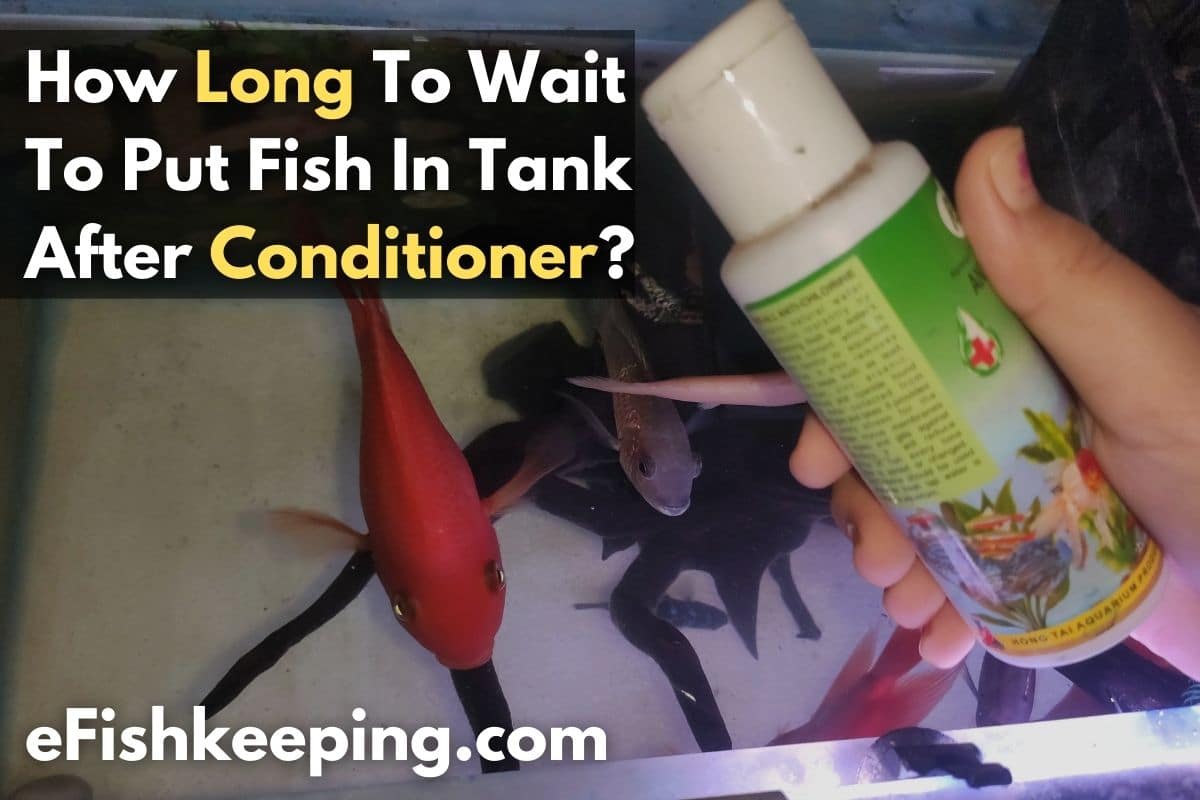


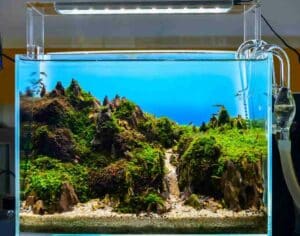


![Too Much Oxygen In Fish Tank? [All You Need To Know!] can-you-have-too-much-oxygen-in-fish-tank](https://efishkeeping.com/wp-content/uploads/2022/06/Can-You-Have-Too-Much-Oxygen-In-Fish-Tank-Explained-300x200.jpg)